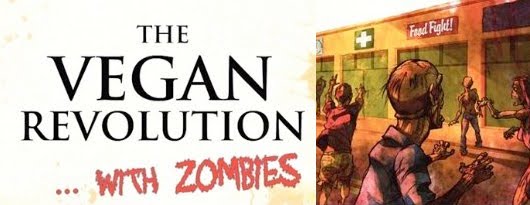Awry by duncan b. barlow
Reviewing fiction from duncan b. barlow always presents me with a challenge of where to start. I met him for the first time 35 years ago. Give or take a year, but my math should be correct. The first time I consumed the art of this creator it was music. It was an Elk’s lodge or VFW hall in Indiana, without a stage, and his band his Louisville-based hardcore band Endpoint, was playing. Duncan was the guitar player who went crazy while they ripped through their set. I went home with the vinyl of their new (at the time) record ‘In a Time of Hate.’
It was Duncan who sold me the record, still sitting on a shelf here in this office. A year and a half later, I wanted to book an Endpoint show, and I was given Duncan’s phone number. It was 1992, and when we got on the phone, somehow the topic of horror fiction came up. I had already had the dream of becoming a writer, and Duncan was the first person I met who wanted to be a writer too.
We were both into hardcore music, writing, etc. We were both learning disabled. We shared passions and had similar educational struggles. Duncan’s success with multiple bands was always an inspiration. Many years after that, our first books just happened to have the same publisher. I was greatly inspired by Duncan’s weird, dark prose that flirted with genre in the same way that a Brian Evenson or Margaret Atwood story does. It is a collection that touches on genre, but it is not held back by the ghettoized distinction of pulp fiction.
It could be Duncan’s position as teacher, a writer with his foot in academia, but more than realistically, it is the skill, the precision. It is also a story-first method that doesn’t worry about genre in the first place. (Those of us know most writers feel that way when they sit down to write)
Awry is filled with short stories whose connective tissue is careful, deliberate choice of words. There are dark stories, ones I would consider horror, some are experimental, and some just emotional. My three favorites are more in the horror vein, but that is not a shock. Those three stories are worth getting the entire book for. There was something that I enjoyed in each story but the stand-outs for me were special.
My favorite stories are Of Flesh and Fur, The Fine Set of Teeth, and The Father’s Work.
On Flesh and Fur was once published as a standalone novella. This is a darkly surreal tale that builds off a strange desire to reproduce…
“My desire to have a child began when I was organizing my basement. Transferring musty things from weary cardboard boxes to sleek plastic containers. It was a thing of beauty. All clear and labeled.”
Of Flesh and Fur stands out as a weird tale; it drips with surreal and at times creepy vibes.
“I lay in bed that night, and it prodded me. A bird pecking in my chest. Let me out. When I fell to sleep, I dreamed of a brown river faded by a vast white ocean. Floated there, the current leading me to land. A surge of water crested the tree line, and when I passed the conflux, the wave towered behind me. Collapsed onto me, and in the tumble, I heard a solitary word. Baby.”
A powerful tale, I can see why Duncan chose it to publish it as a stand-alone, and it might be the best in the collection, but it is not my personal favorite.
My favorite is Fine Set of Teeth, which worked to get my skin crawling. The way the story unfolded made me laugh and uncomfortable at the same time. It feels like something spun out of the hilarious opening paragraph. I found the story evoked major feelings.
“The tooth's origins were unknown to him, but when he’d woken, disoriented from the dream he could not remember and went to the kitchen for a glass of water, Gavin found the tooth resting on the table. The tooth was spotless save for the thin string of saliva, which ran between the crown and the tabletop Gavin scratched his left temple. The remaining strands of hair caught on his freshly chewed fingernails. The tooth had to belong to someone.”
But the story that evoked the strongest feelings for me was the Cormac McCarthy-like The Father’s work. The southern gothic weirdness of this story again gave me the correct creeps.
“The nurses at the hospital asked Boone a litany of questions, and he responded with the following answers a few minutes ago, trapped under a tractor, hatchet, and finally, just plain bad luck. They wheeled Cade into surgery, and a nurse escorted Boone to a room with an empty bed, where he remained until Cade returned from surgery, not to tend crops, the pig, or shower.
On the second day in the hospital Cade was more present so Boone said do you know why I done it.
The boy nodded.”
There is no writer I compare Duncan to instantly but those looking for slightly off-beat stories look no further. His novels are equally hard to pin down. You could accuse me of bias, but if I didn’t like it I would be silent. I love this work and think he reflects the writer I know. That is a great thing about writers from outcast tribes. The stories are in any way punk rock, but that outsider vibe drips off the pages. Awry is a powerful work.



